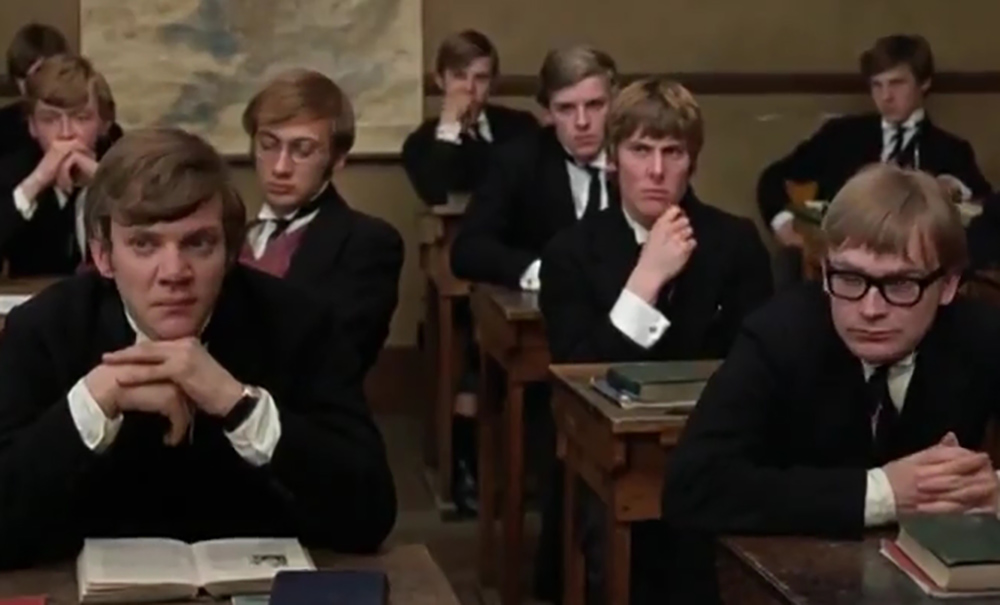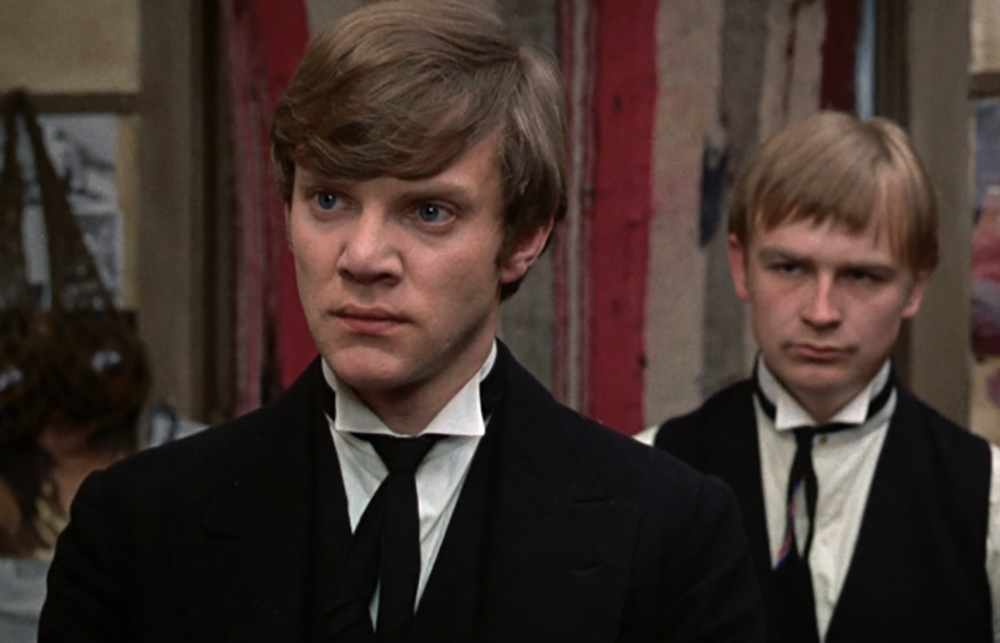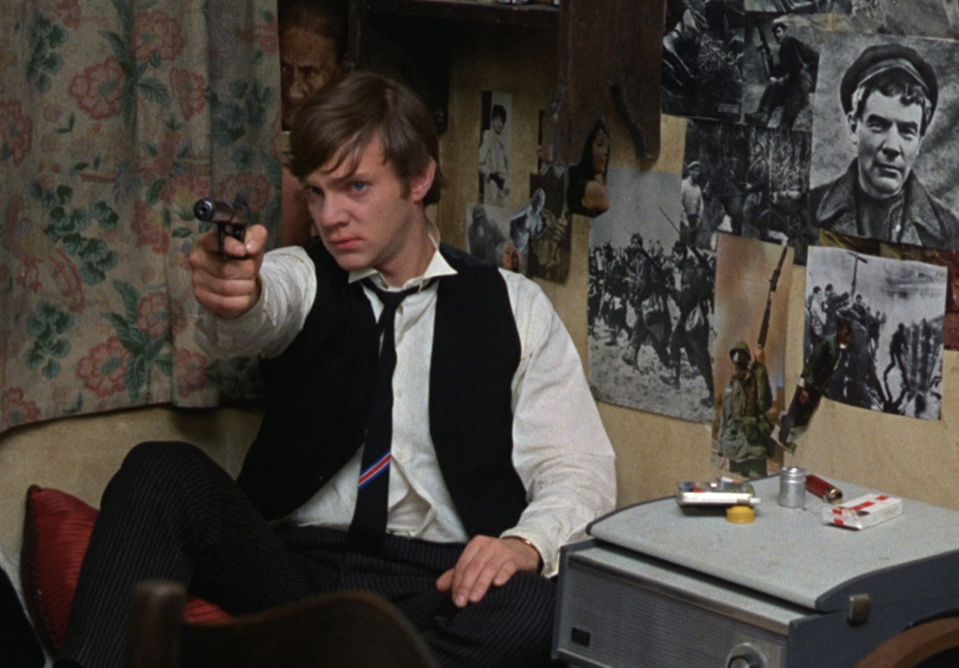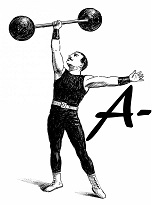“If….,” Rudyard Kipling’s ode to British stoicism and stiff upper lips, hangs like a raised eyebrow over Lindsay Anderson’s acerbic public school drama, which returns the gesture with a sarcastic nod. Bitter and enigmatic, the film pointedly—and perhaps frustratingly—refuses to come down on the side of either its problematic protagonists or the self-serving patriarchy they are fighting against.
A sense of mutiny and discord
Released at the end of 1968, the year of Richard Nixon’s election campaign, the Tet Offensive, the assassination of Robert F. Kennedy, and the Soviet Union’s brutal suppression of the Prague Spring, “If….” follows a small group of wannabe-revolutionaries kicking back against the system at a nameless public school. As it spirals into fantasy and mutiny, the film feels charged with a larger sense of agitation and discord.
Although “If….” is divided into eight chapters, suggesting the rigidity and orderly nature of school life. However, Anderson directs with fluidity, arbitrarily throwing in black and white scenes to jarringly disrupt the film’s rhythm. Visually, the colour sequences recall Milos Forman’s “The Firemen’s Ball,” which was also shot by cinematographer Miroslav Ondricek and caused controversy in Czechoslovakia on its release.
“If….” begins with a documentary-style peek at the beginning of a new school term before, almost imperceptibly, switching to dreamlike sequences. We meet a group of teenage boys as they return from their school holidays, bustling about with their trunks and cases as they settle into their dorms, studies, and “sweat rooms.”
These opening scenes give us a very effective initiation to the school’s hierarchy and slang. The House is lorded over by senior students called “Whips,” who are responsible for keeping everyone else in line. They have special privileges and enjoy their power over the other students, especially the newbies, or “scum,” who they treat as manservants and discuss in homosexual terms. Head of the House is the supercilious Rowntree (Robert Swann), who demands more from the whole group this term because their standards have become “disgustingly slack.”

Malcolm McDowell, the ‘agitator’
Into this environment sweeps Mick Travis (Macolm McDowell), looking like a highwayman in his wide-brimmed hat and face hidden under a scarf. Even before we see his face, it’s clear from his demeanour that he’s a non-conformist. He enjoys antagonising the brown-nosed Whip-in-waiting Stephans (Guy Ross) and has secretly grown a moustache over the holidays. The facial hair doesn’t last long, but it instantly distinguishes him from his clean-shaven peers.
We don’t get much of Travis’s background or what, specifically, he is rebelling against. However, it’s pretty clear from the outset that whatever it is, he’s against it. This was McDowell’s film debut and he has the cocksure arrogance, sardonic delivery, scornful eyes, and ironic crooked smile that would make him the perfect fit for the role of Alex DeLarge in “A Clockwork Orange” a few years later.
Travis is joined in his schemes by his two friends, Knightly (David Wood) and Wallace (Richard Warwick). They are both laid back and good-natured compared to Travis, and seem quite happy to act as his fan club as he spouts radical aphorisms like “Violence and revolution are the only pure acts.”
A famous ending that begs further exploration
The mutual antagonism between the Whips and Travis and his pals escalates until Rowntree decides to “nip the unruly elements in the bud.” This means doling out some corporal punishment to the trio for little more than having a smirk on their faces. After the whipping, the narrative becomes increasingly fragmented; it concludes with the famous scene where Travis and his revolutionaries gun down teachers and visitors from the school rooftops.
The tagline asks: “Which side will you be on?” In this war, it’s a choice between the Whips and the smug privilege they represent, or Travis’s hazily motivated “Crusaders.” We instinctively side with the latter, because the Whips are smarmy, self-satisfied, and hold all the power, which they routinely abuse.

However, Travis doesn’t exactly come across as the kind of guy you’d want to follow, either. Obsessed with death and revolutionary symbols, there is something definitely off about him; it ultimately makes you question whether his cause is worth considering. This unnerving aspect of his personality taints what might have been a straightforward Underdog vs The Man narrative.
Travis’s otherness is accompanied by the astonishing “Sanctus” from Missa Luba, which recurs at various points throughout the film. Take a Latin mass sung by a choir of Congolese adults and children in their traditional style. It is a joyous, unrestrained counterpoint to the stuffy hymns suffered by the schoolboys in church. We first hear Travis playing it in his tiny study, then it accompanies some of the more dreamlike sequences, like Wallace’s flirtation with a younger boy while he’s working the gymnastics high bar, and the startling moment in a roadside cafe when Travis and a young woman seduce each other by playing tigers. It’s a breath of fresh air wafting through the stuffed-shirt formality of the film’s setting. It’s no doubt the Whips would find it as “degenerate” as they find Travis and his buddies.
Comparing ‘If….’ to ‘Kes:’ two complementary narratives
It was interesting watching “If….” back-to-back with “Kes,” which I reviewed earlier in the week. At one point, the headmaster of the public school in “If….” makes a speech about Britain being a powerhouse of ideas, experiments, and imagination. If that was truly the case, then it was also the working-class secondary school students like Billy Casper in “Kes” who ended up down the coal pits and the boiler rooms making the country function for the higher classes to pursue their loftier goals. Taken together, the two films form a fascinating picture of the class-bound British education system half a century ago, which still has parallels in modern society.
“If….” finishes without resolution, and some viewers might find it frustratingly ambiguous. Perhaps it ends this way because the questions it poses have no satisfactory answer, either fifty years ago or today. “If….” But what comes after that ellipsis?


